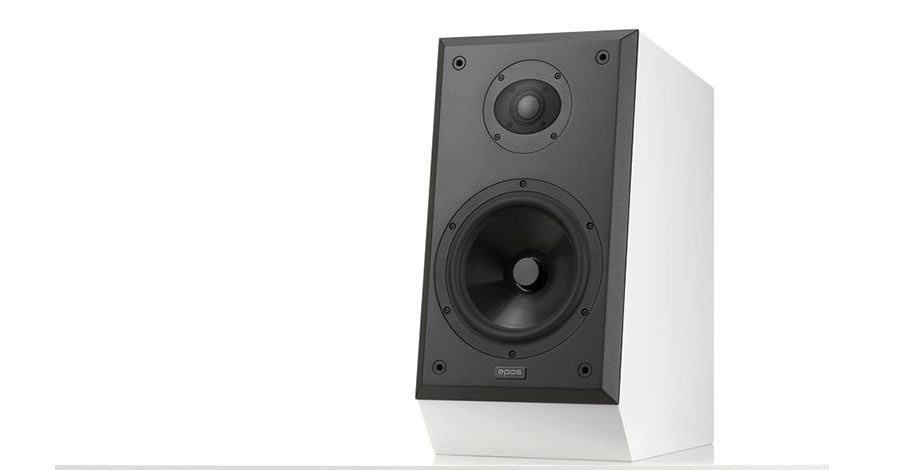
The original, Robin Marshall designed Epos ES14 was a minimalist design which carved itself something of a niche within the 1980s and 90s British ‘flat-Earth’ hifi fraternity. Epitomised by Linn and Naim products, and emerging alternatives such as Exposure and Albarry, the flat-Earth approach prized attributes such as dynamics, tunefulness and timing over detail, timbre, or tonal colour. So the ES14 sat alongside the likes of Linn’s Kan and Sara loudspeakers, facing off the BBC derived alternatives from manufacturers such as Harbeth, Rogers, or Spendor which epitomised the alternative school of thought. They were also a premium priced product for their market, costing around £500 a pair when very decent, budget standmount designs could be had for somewhat less than half that amount. Famously, the ES14 eschewed a crossover network, relying on a single capacitor to separate bass from treble in this two-way, reflex-ported design, and getting away with it by dint of some high quality drive units and the fact that, for many happy customers the speaker’s strengths outweighed a slightly ragged top end. This hair-shirt approach aligned well with the objectives of those whose amplifiers’ front panels spurned such fripperies as tone controls or on/off switches.
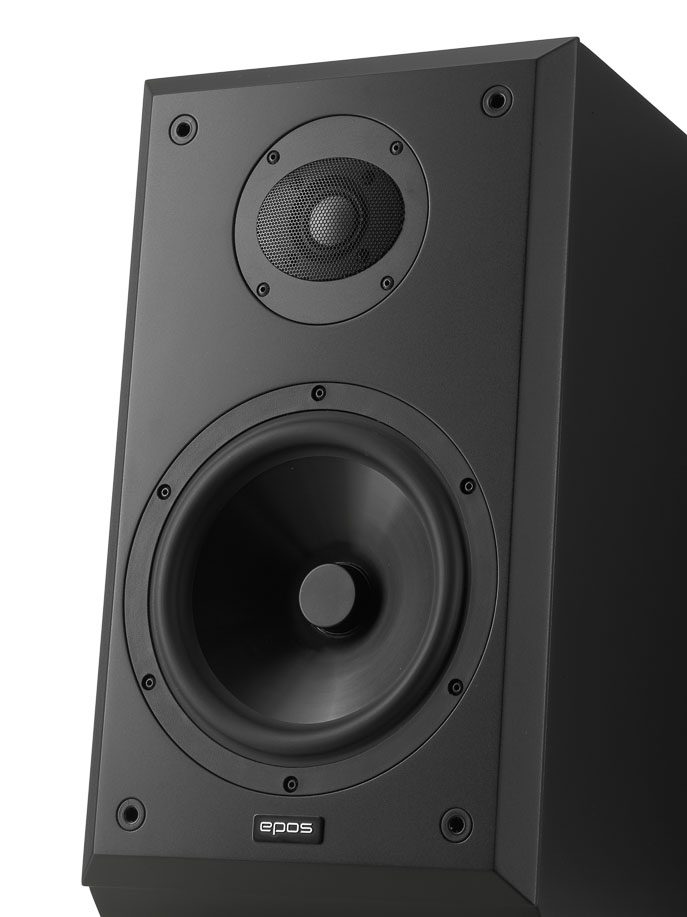
And now, the mildly cultish ES14 is reborn as the ES14N, albeit the physical similarities are superficial. Still a two-way standmounting design of larger than average cabinet size, the ES14N sports a 7” mica-filled polypropylene bass/mid and 28mm ceramic coated aluminium tweeter in place of the original’s 6.5” polypropylene and 1” aluminium dome units, and the crossover is markedly more complex, but the most obvious visual change is that the front baffle now slopes away from the listener, to time-align the drive units. Purists have been making a bit of a fuss, arguing that a product which bears the ES14 name should at least look like an ES14. The rest of us are just glad it’s back.
A new Epoch?
The Epos brand is now owned by FinkTeam, the German loudspeaker specialists responsible for backroom design and development for many a respected ‘speaker brand. They launched their own loudspeaker range a few years ago, and I use their entry model, the £11,000 Kims (reviewed in issue 197) here. The big question in lots of minds when the ES14Ns were announced, was ‘would these be more affordable alternatives to the Kims, or something entirely different?’ It’s a valid question: would the Epos brand take FinkTeam in a different direction, or might it risk undercutting their own brand range?
Karl-Heinz Fink is at pains to point out that while the physical appearance is different, FinkTeam has done its best to be true to the Epos ethos. That implies a lively, energetic presentation with an ability to bring out the music, good dynamics, timing, and decent bass extension for the size. FinkTeam plans for more models in the range, something to pick up where the ES11 and ES22 left off, perhaps. The Epos range will sit below the FinkTeam brand, offering an entry to the FinkTeam way of doing things. So, a baby Kim after all, then?
The review samples, in a plain but understatedly smart satin black finish, arrived and were quickly installed on their own stands. Due to the cabinet size the stands are about 52cm in height, so a little lower than the standard 60cm offerings from aftermarket stand makers, but the ES14Ns can be ordered without stands, and most makers will provide bespoke heights to order anyway. I used them with their own stands, and with a pair of 60cm acrylic stands I have on hand, and which often outperform manufacturers’ options, especially those who use high mass designs. The height difference was noticeable, both visually and sonically, and in my room while I noticed improvements in rhythm and drive, more clarity and the resolution of inner harmonic and textural detail, the acrylic stands weren’t the unqualified improvement they often are. In part, this was down to the height, which took the tweeters noticeably out of my ear line, but also because FinkTeam seems to have done a decent job with these stands in the first place; they use a solid pillar made up of four solid wood sections glued together using the same internal damping compound used in the speaker cabinet, a damped tri-layer steel and bitumen top plate, and a steel bottom plate with adjustable spikes for levelling. It’s not a low mass stand, but it’s considerably less hefty than the chunky, mass-loaded options many favour. They provide little packs of self-adhesive silicone bumpers which are used to separate the base of the speaker from the top plate of the stand.
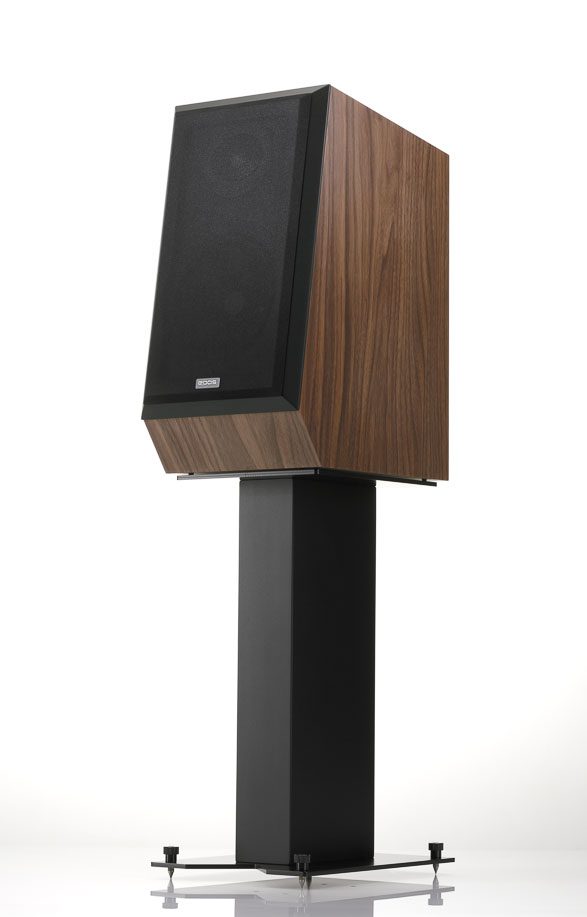
The first thing I, as a habitual Kim user, noticed was that there wasn’t anything I particularly missed when using the ES14N. Here is a lively, energetic, coherent and cohesive presentation without any obvious weaknesses. It’s pretty clear that FinkTeam is pursuing the same blend of virtues and priorities for the Epos range as it does for its own name range. This is clearly good news for those for whom the pricing of the Kims and Borgs makes them unrealistic. As you’d expect, though, this isn’t a Kim-on-the-cheap, and the Kims, when reintroduced, were convincingly, meaningfully and reassuringly better, but not in a fundamental sense. In short, they didn’t make the ES14Ns sound broken in comparison, which sounds like damning with faint praise, but actually is one of the biggest compliments I can pay.
This is not a small speaker
There’s a ‘big speaker’ sound to the ES14N, GoGo Penguin’s ‘Prayer’ from A Humdrum Star [Blue Note] has generous, solid bass and rich tonal colours allied to a strong sense of depth and space. And then you realise that, actually, these are quite substantial cabinets in their own right. Narrower than the Kims, which have to accommodate an 8” main driver, but not so much shorter and a little deeper, the sloping front baffle design hides its volume quite well. So don’t underestimate the size it’ll take up, but it’s not by any means a large standmounter. And this ‘big speaker’ sound doesn’t make it ponderous: the next track, ‘Raven’ has complex and intertwined rhythms which here are tight, fast and, above all, lucidly presented. ‘Spark’ the title track from Hiromi’s 2016 album [Telarc] has speed and energy, managed capably by excellent timing. The trio of piano, contrabass and an unfeasibly large drum kit may lack the ultimate degree of bass weight and scale of something like the Kudos Titan 808s which preceded them here, or even the Kims, but it’s not something I really missed, because what there is, is entirely in keeping with the rest of the presentation. The timing is so tight, and the bass so tuneful there was still huge fun to be had with the whole album.

It makes so much sense to trade quantity for quality; the ported bass goes deep – the port is tuned to 38Hz, but the rolloff is steep so the speaker isn’t leaning too heavily on its output and that surely helps with the whole timing and coherence angle. The cabinet is double-layer MDF, damped mainly by the adhesive chosen with minimal additional damping material, and braced to control cabinet resonances; and the chamfered front baffle isn’t merely a styling thing, it helps manage diffraction effects in the critical 2–3kHz range. It’s not a complex cabinet, but a combination of the shape, which inhibits internal standing waves, and clever construction with modern materials used intelligently has produced a design which does the job, without the cost implications of more sophisticated solutions.
‘All the right notes…’
Energy management, then, is where it’s at. Complex and highly dynamic music holds no fears, and Hiromi’s phrasing was easy to follow, the melody lines and arc of a phrase coming across clearly. This is high-energy jazz, and can sound bombastic through lesser loudspeakers which, to paraphrase a much-loved quotation from Eric Morcambe, may give you “all the right notes, and even in the right order; but not necessarily at the right time, sunshine, I’ll give you that…”. Here, the loudspeakers measuring the energy out as precisely as the performers did.
Abdullah Ibrahim’s album Ekapa Lodumo, with the NDR Big Band, has a track, ‘African Market’ which begins with the band mimicking the noise and chaos of just such a market. Random toots, parps, honks, thumps and general din. Slowly, the music begins to emerge from this chaos and you gradually become aware that, through a fragment of melody here, a line there, a groove has developed. This all starts earlier in the track than one might at first have noticed, and part of the fun is spotting where these little hints appear. The ES14Ns make this game easier than quite a few speakers I’ve tried over the years. The track itself is an ebullient, raucous, joyous musical event and, if the ES14Ns don’t perhaps give you the full palette of tonal colours and shades that some full-range speakers can manage, they are rather good at bringing out that joyful side.
The other side of the energy management equation is apparent on more low-key music. Sinatra, ‘One for my baby’ [Capitol] has intimacy, helped by the secure and convincing separation of piano, band and voice; ‘Villancico Catelan’, the Kings Singers’ favourite, has spaciousness and a satisfying sense of the church acoustic it was recorded in. Fauré ‘Pavane’ [Chandos] gives a comprehensible impression of the spatial relationships between the different parts of the orchestra. There’s subtlety and low level information underpinning every performance, lest you think this is just another Tiggerish loudspeaker which is huge fun, for a while, but ultimately tiresome or just hard work. The Epos ES14N does that thing of being fundamentally competent, of delivering whatever is there, without unduly editing or embellishing aspects of the message.
So when we’re talking about energy management, don’t make the mistake of assuming the energy is managed by suppressing it. I listened to the ES14Ns at some fairly antisocial volume levels and there was barely any hint of strain or compression. Every now and then there might be a slight edge to upper treble – Keith Jarrett’s ‘Hymn of Remembrance’ from Hymns, Spheres [ECM] put a subtle glare on the top end, but this is a massive pipe organ at full chat, replayed at entirely convincing levels in my sitting room, and I think it can be forgiven. Conversely Laura Jurd’s trumpet, and accompanying string quartet on the title track from Landing Ground [ACT] has urgency and a well-resolved sense of headlong forward motion, without being strident.
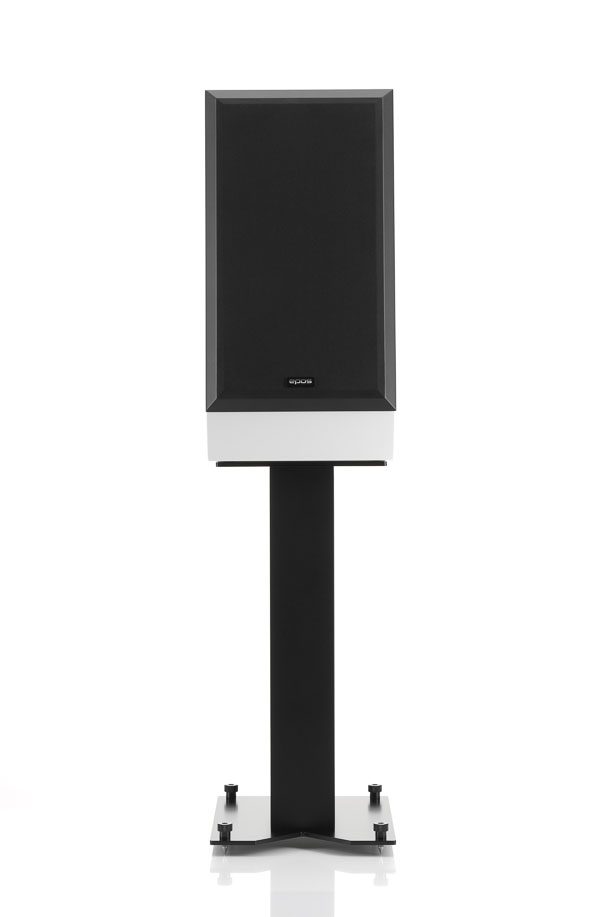
A standmounting loudspeaker needs to be considered as a system with whatever stands it sits on. The supplied Epos stands are clearly more than just bits of ironmongery between the floor and the bottom of the speaker – some thought has gone into their construction and how they integrate with the box. For the most part, they neither intrude nor detract unduly from the performance. The supplied silicone bumpers work fine, but replacing these with small pucks of AcouPlex between top plate and cabinet base shows there is potential for experiment here. Used like this, bass retains its weight, but acquires definition and structure; piano tone in ‘January’ from My Finnish Calendar [ACT] is more fully realised: dark, sonorous and tuneful bass, while the upper registers have a bell-like clarity. You notice the call and response that is going on between bass and treble notes, because of the security in pitch. Patricia Barber, ‘The Hours’ from Mythologies [Blue Note], it’s not just that the voices in choir are clearly delineated, its things like the rhyming structure in the lyrics being more apparent. These may be small things, but they all add to the whole in terms of how you understand and appreciate the musical message, and they are signifiers of the lucidity and coherence of this loudspeakers’ presentation.
It is easy to forget that these are sub-£5,000 standmounting loudspeakers. This, of course, still puts the ES14N in an entirely different price bracket to the originals, relative to the budget end of the market, but in the process they have moved from ‘flawed but likeable left-field alternative with giant-killer credentials in some areas’ to ‘hugely capable all-rounder that isn’t disgraced in some rather elite company’. It’s a different definition of bargain, but it’s still a bargain.
Technical specifications
- Type 2 way, reflex ported, standmounting loudspeaker. Port tuned to 38Hz, 4th order rolloff
- Driver complement 1 × 7” mid/bass driver, injection moulded, mica filled polypropylene cone of varying thickness; low hysteresis rubber surround; 1 x 28mm ceramic coated aluminium dome tweeter, ferrite magnet system, no Ferrofluid
- Distortion 0.2% THD @1W
- Crossover frequency 2.7kHz
- Crossover type 4th order acoustic Linkwitz-Riley. Baffle step compensation on bass, RF compensation at 30kHz for tweeter resonance. Air core inductors and film capacitors in critical areas. Impedance compensation for better compatibility with tube amplifiers
- Frequency response (in room, typical) 40Hz-23kHz (-6dB), 33Hz-25kHz (-10dB)
- Impedance Average 6 Ohms, 4.3 Ohm minimum at 160Hz
- Sensitivity 87dB @ 2.83V/1 metre
- Dimensions (H×W×D) cabinet 491 × 250 × 385mm
- Stand height 515mm
- Weight 16kg each, without stand
- Finishes Walnut; White semi matte; Black semi matte
- Price £3,750, $4,200 per pair (standard finishes)
Manufacturer
Epos Loudspeakers/FinkTeam
UK distributor
Kog Audio
+44 (0)24 7722 0650
By Steve Dickinson
More articles from this authorRead Next From Review
See all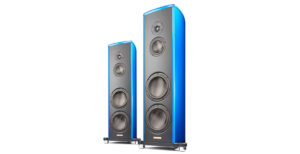
Magico S3 floorstanding loudspeaker
- Jun 27, 2024
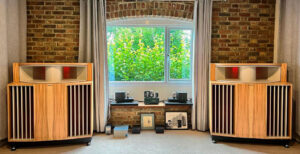
Lowther Hegeman Sound Reproducer
- Jun 27, 2024
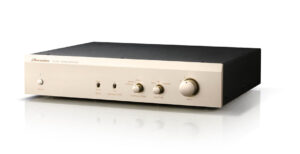
Phasemation EA-350
- Jun 19, 2024
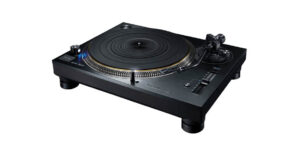
Technics SL-1210G
- Jun 19, 2024








